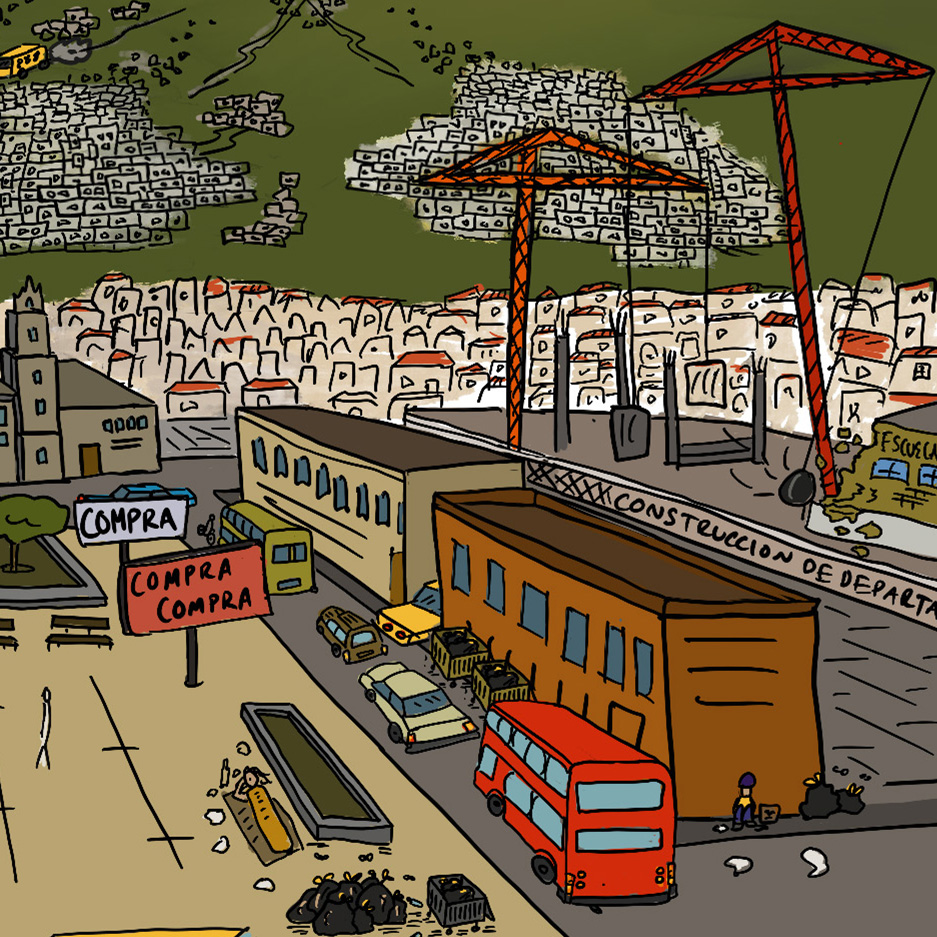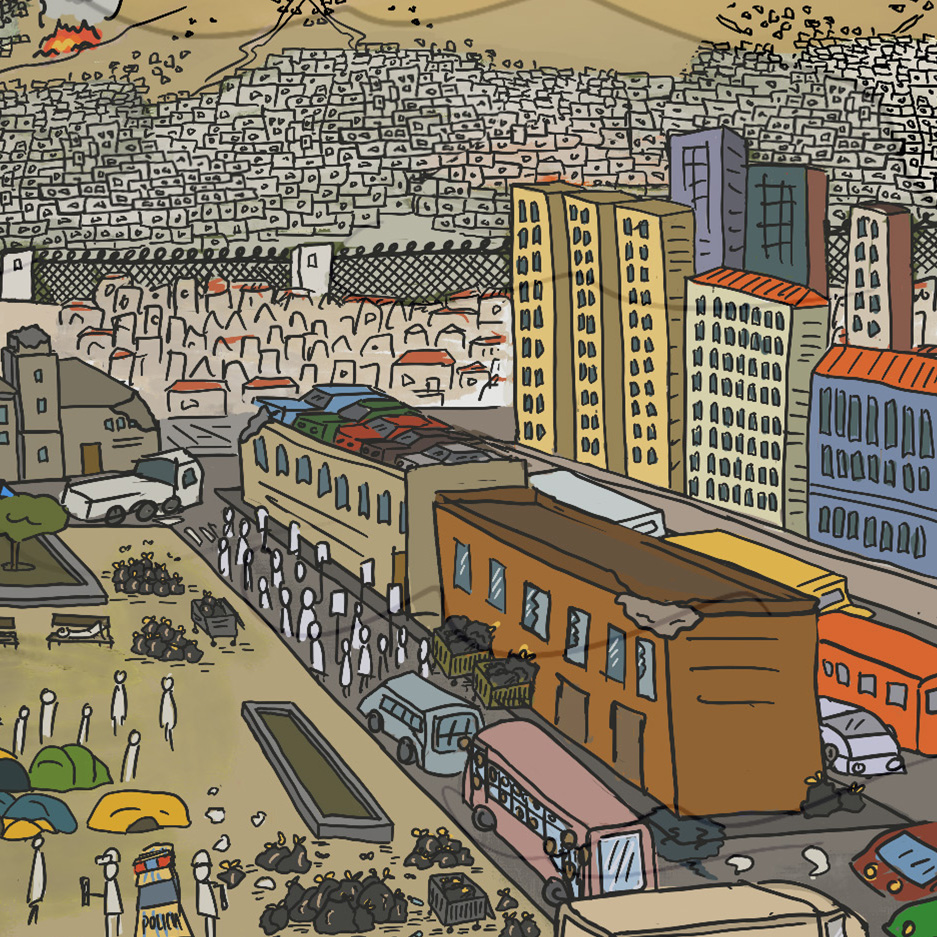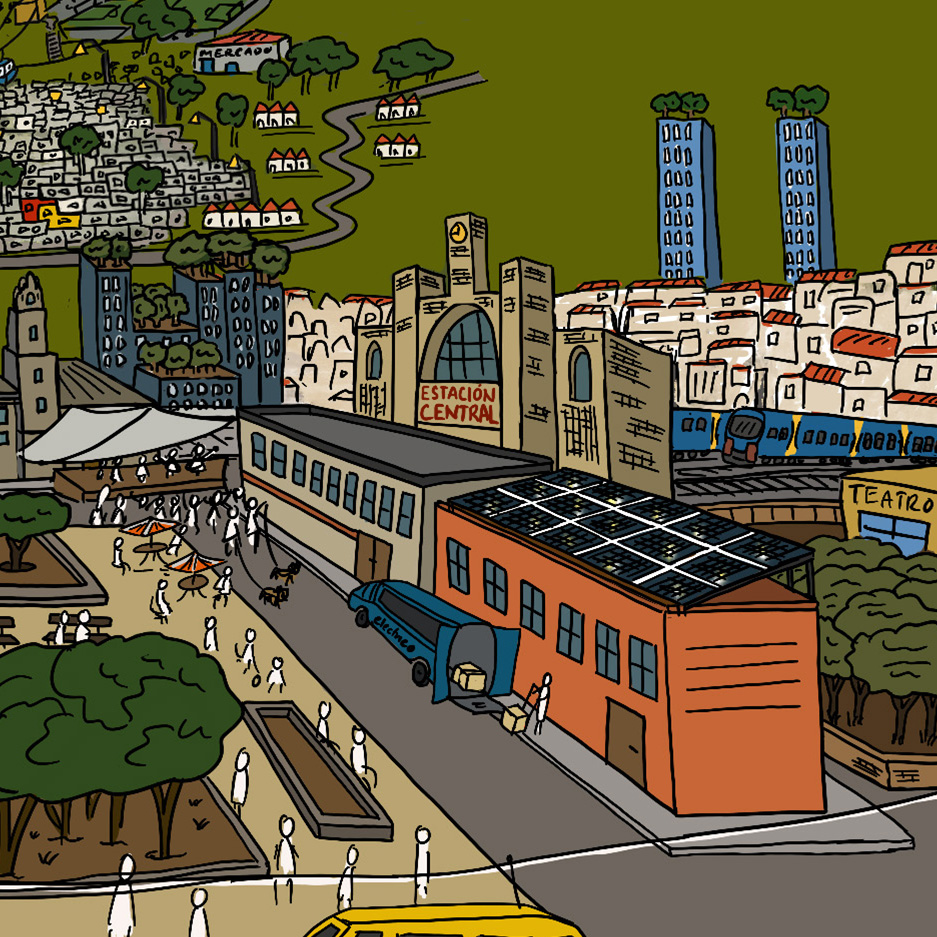
Present. Built environment.
The built environment aims for higher concentrations of people, with a dependency on private transport. There are few considerations for electrification of transport, and mobility options are very limited.
Spaces between buildings and walkways are seen as spaces for refuse or temporary parking.
Overhead lines begin to crowd what few trees there are along the streets, and the sidewalks aren’t inviting to pedestrian traffic.
Commerce is in centres that require big, multi-storey parking garages. The priority for more and more construction as short-term job-creation and investment often delivers misplaced buildings—so tall buildings rise in areas where city services can’t function for them.
Buildings have poor energy efficiency and insulation. Most are built with steel-reinforced concrete. Most buildings and homes aren’t built with climate impacts in mind, and no renewable energy (PV, water heaters) are really visible.

